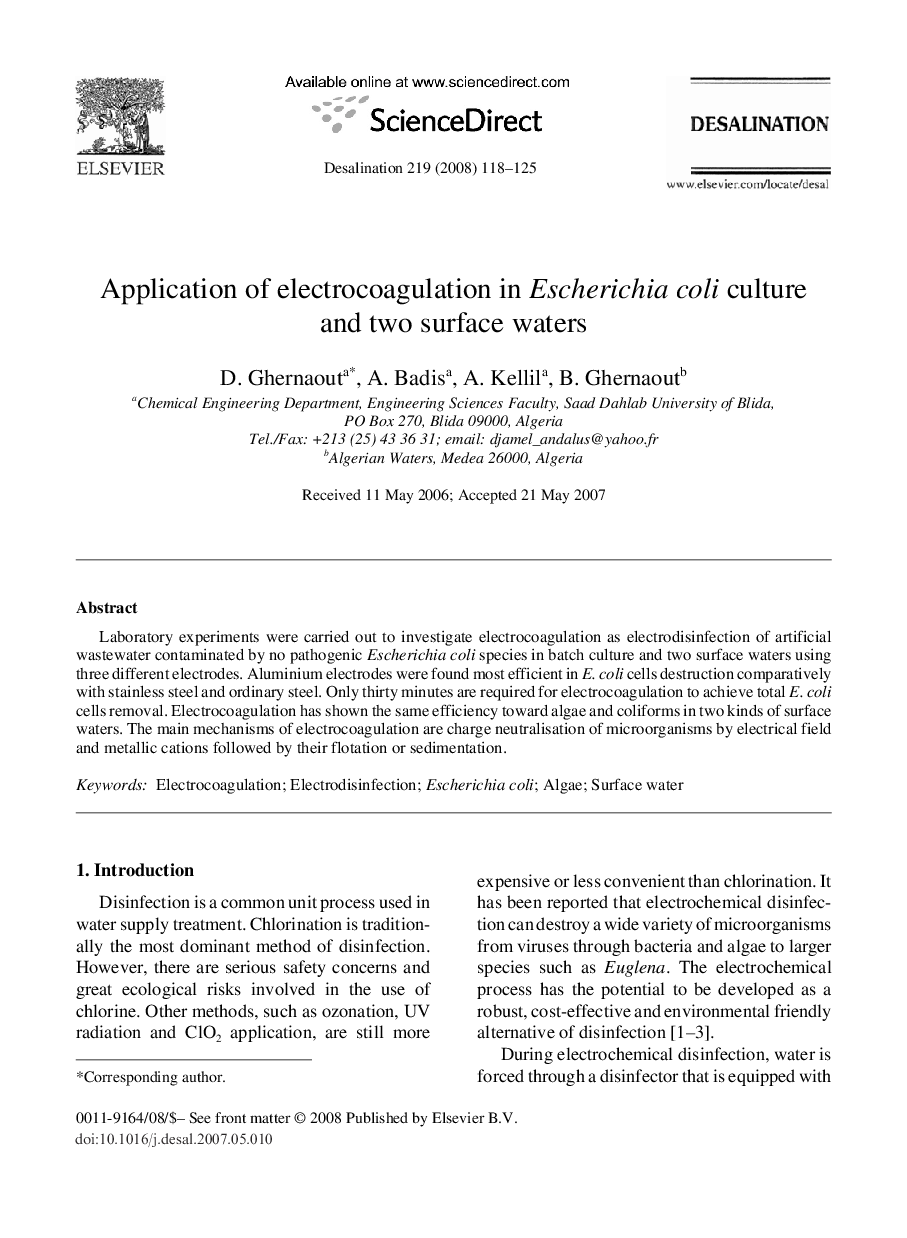| Article ID | Journal | Published Year | Pages | File Type |
|---|---|---|---|---|
| 627786 | Desalination | 2008 | 8 Pages |
Laboratory experiments were carried out to investigate electrocoagulation as electrodisinfection of artificial wastewater contaminated by no pathogenic Escherichia coli species in batch culture and two surface waters using three different electrodes. Aluminium electrodes were found most efficient in E. coli cells destruction comparatively with stainless steel and ordinary steel. Only thirty minutes are required for electrocoagulation to achieve total E. coli cells removal. Electrocoagulation has shown the same efficiency toward algae and coliforms in two kinds of surface waters. The main mechanisms of electrocoagulation are charge neutralisation of microorganisms by electrical field and metallic cations followed by their flotation or sedimentation.
